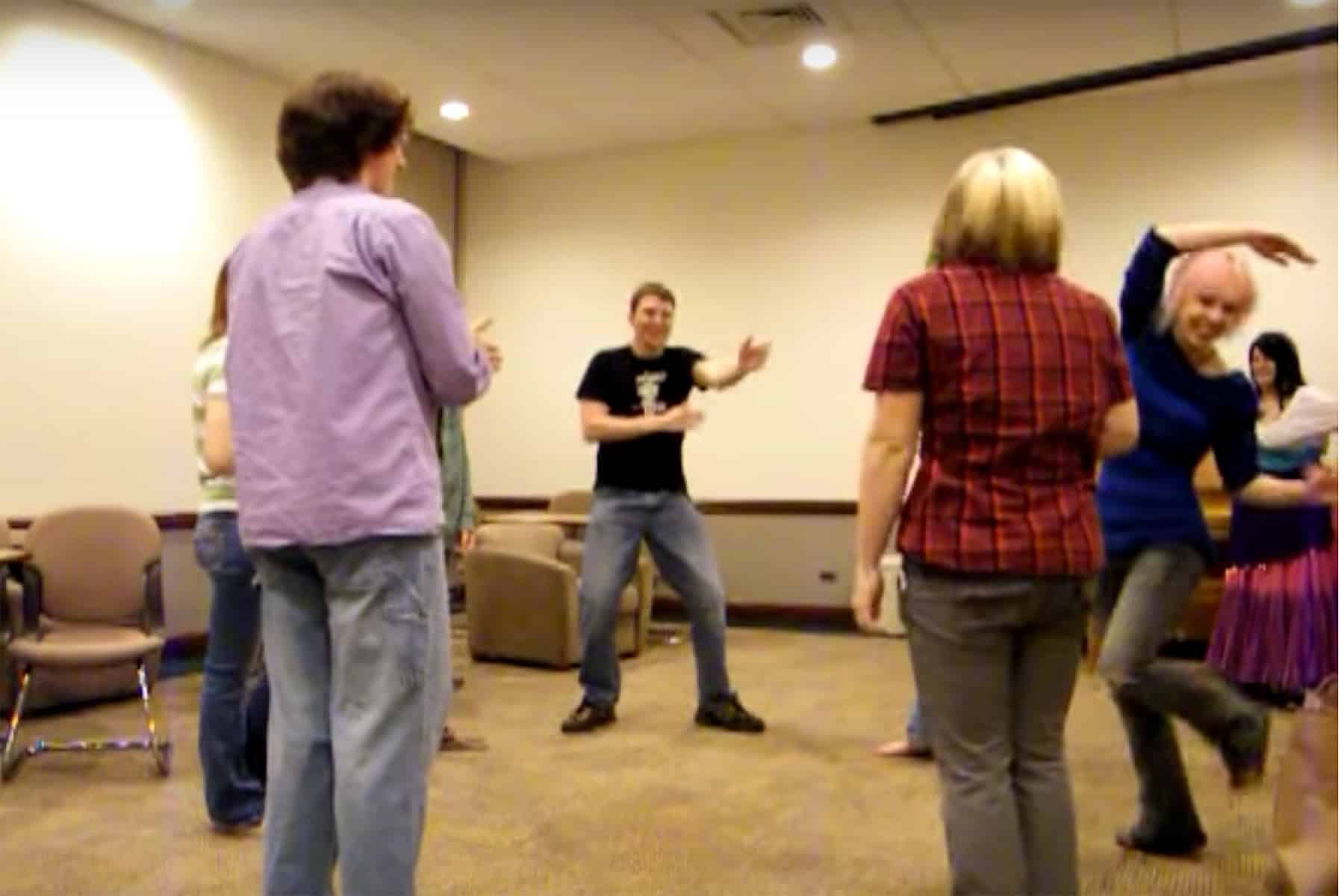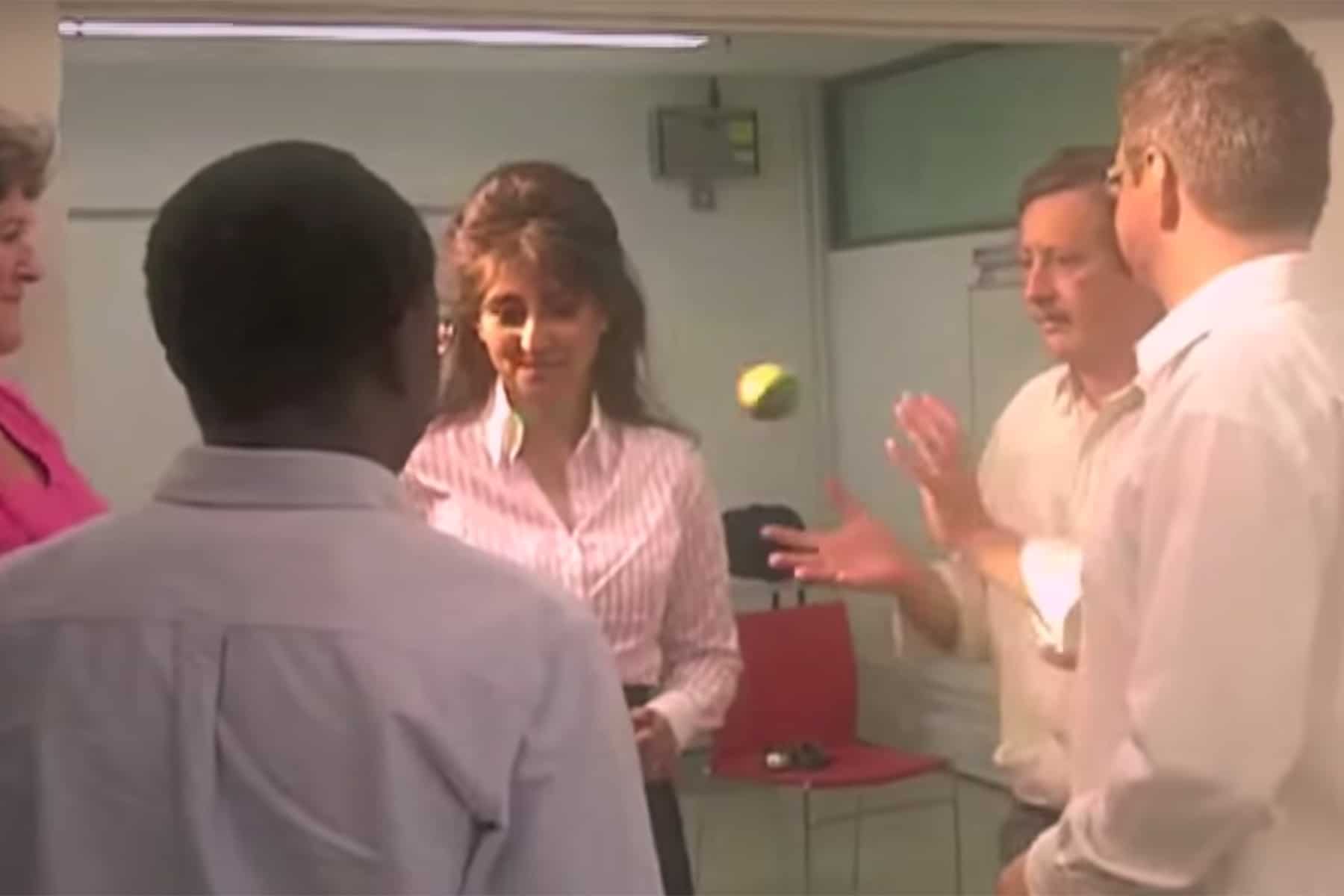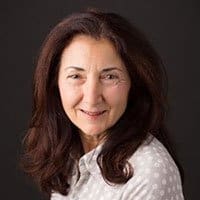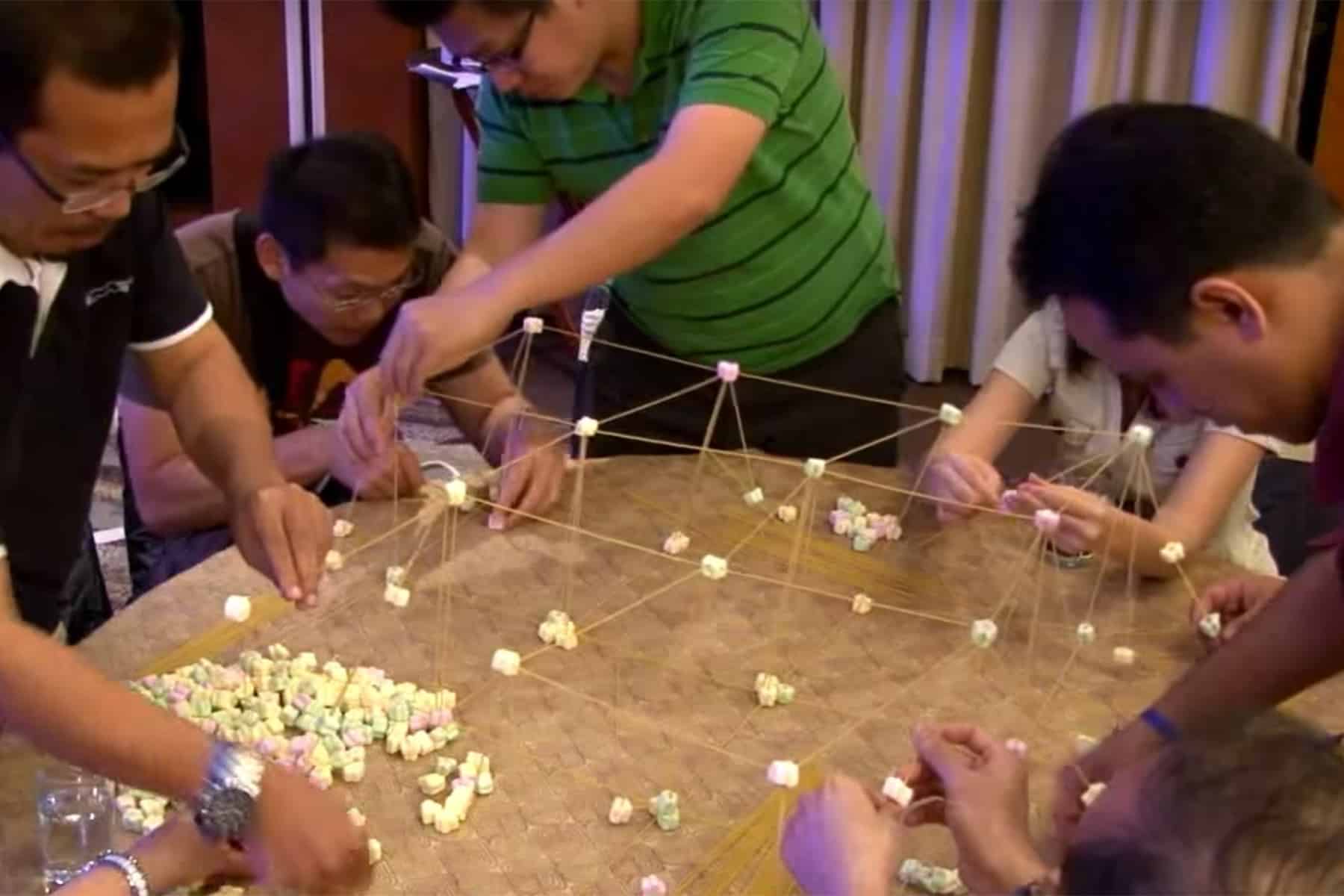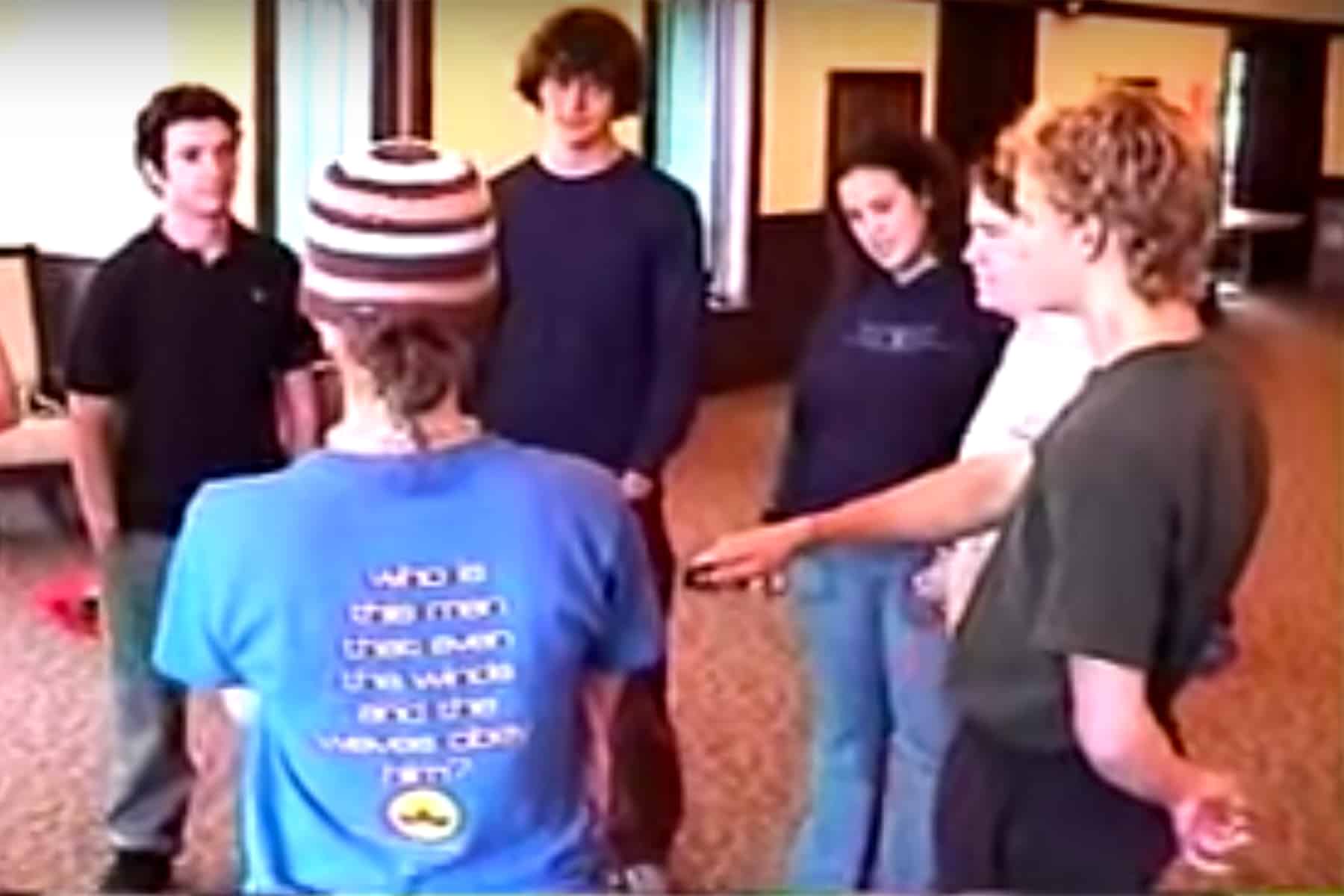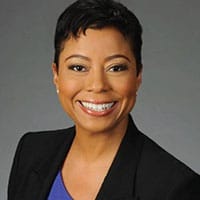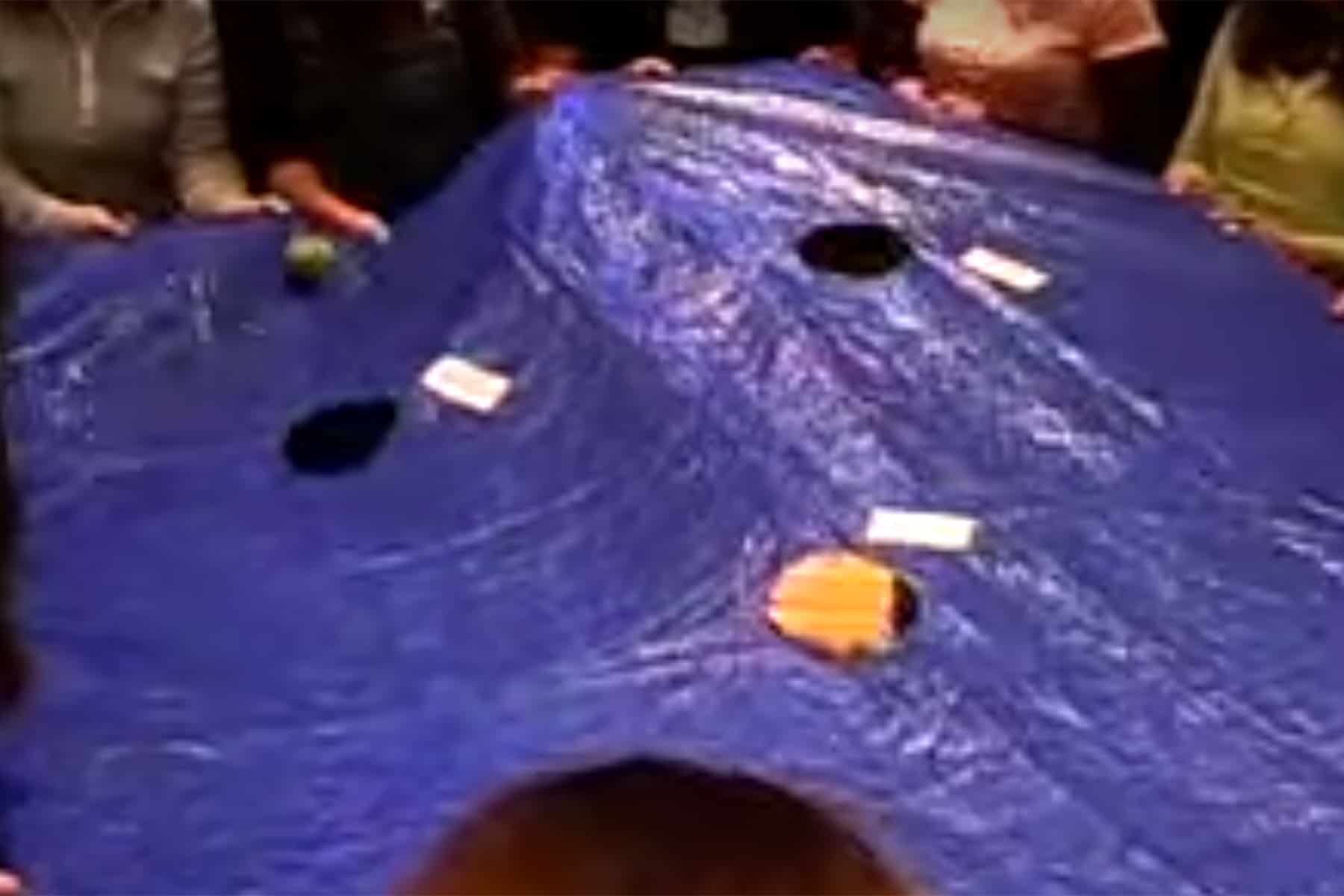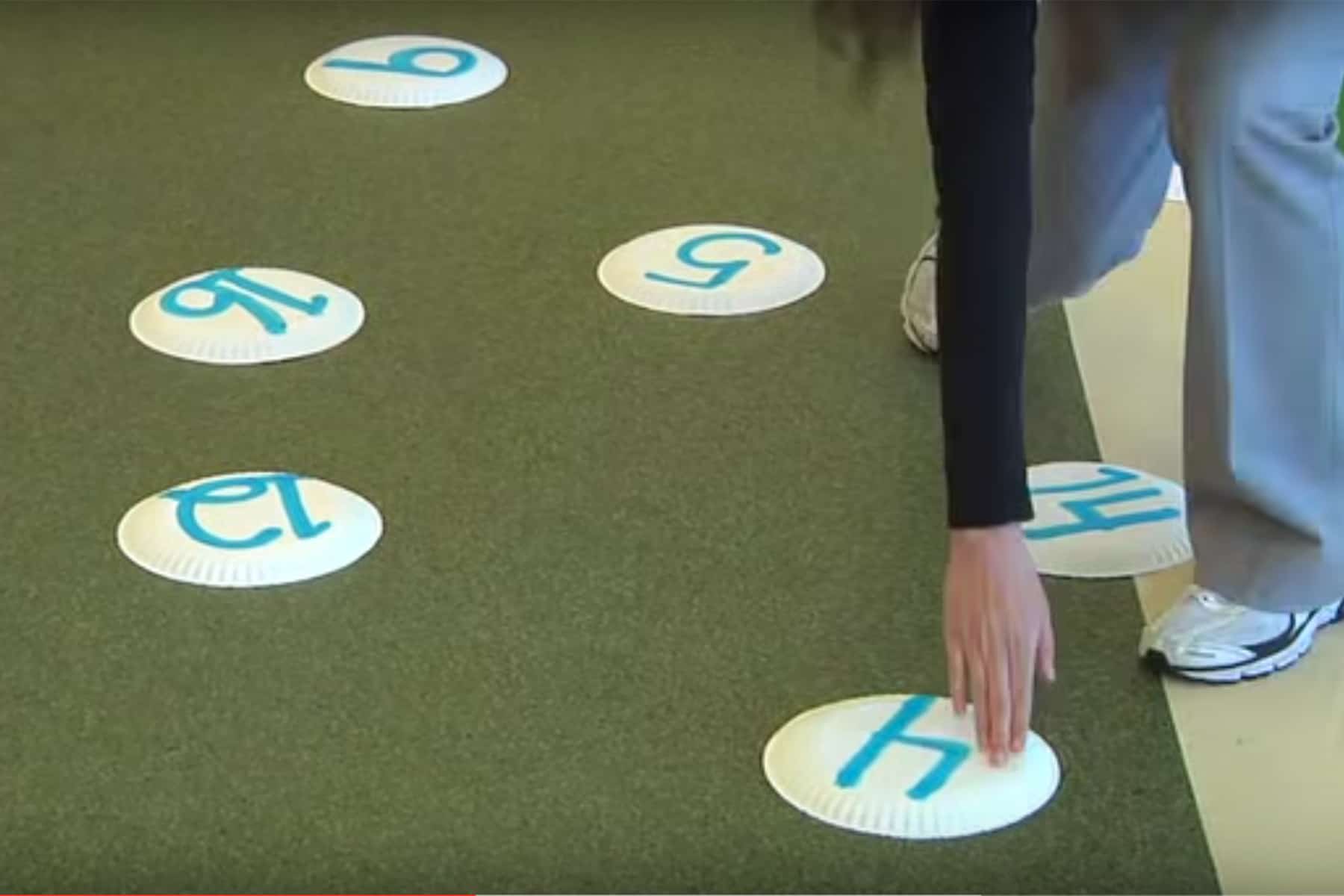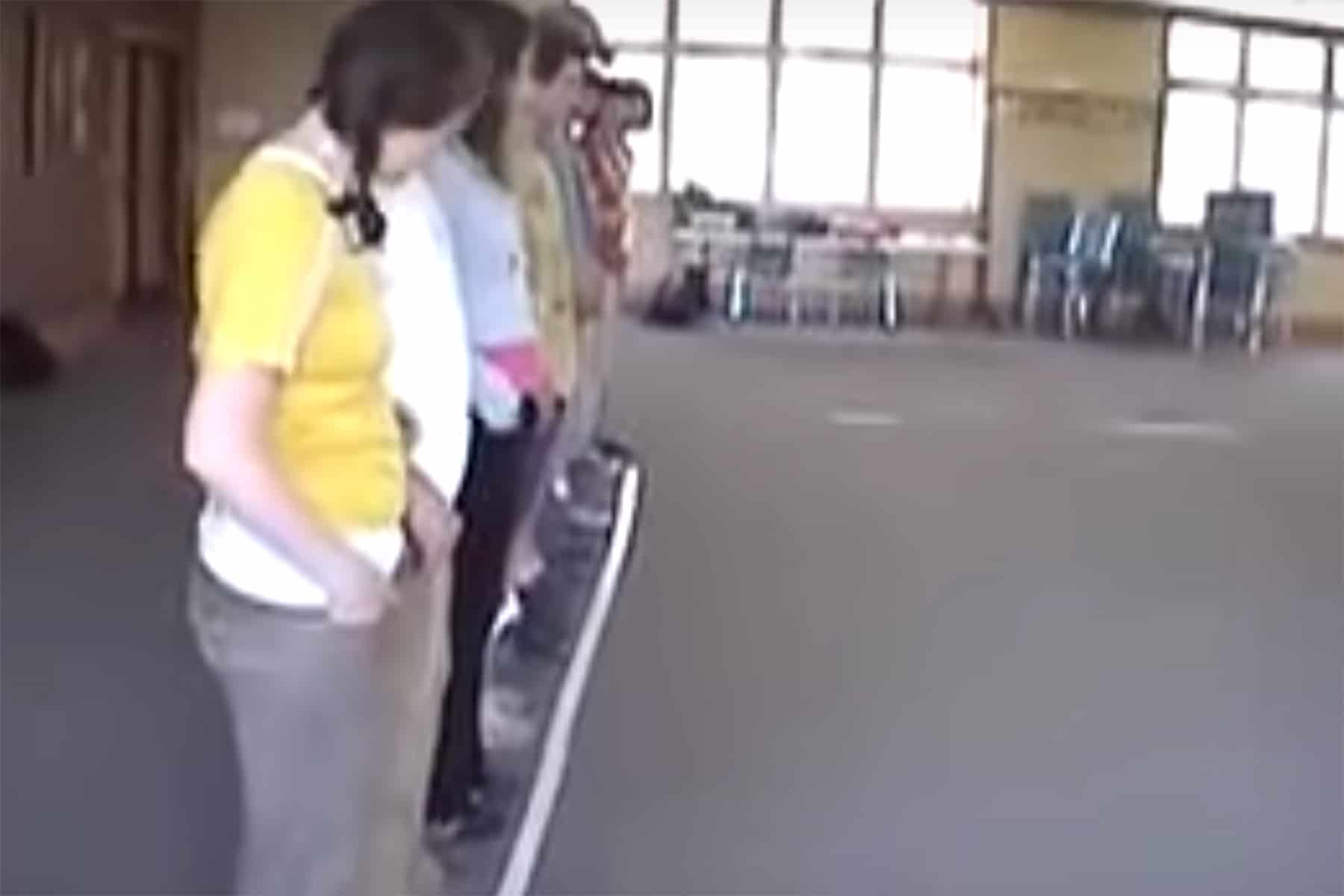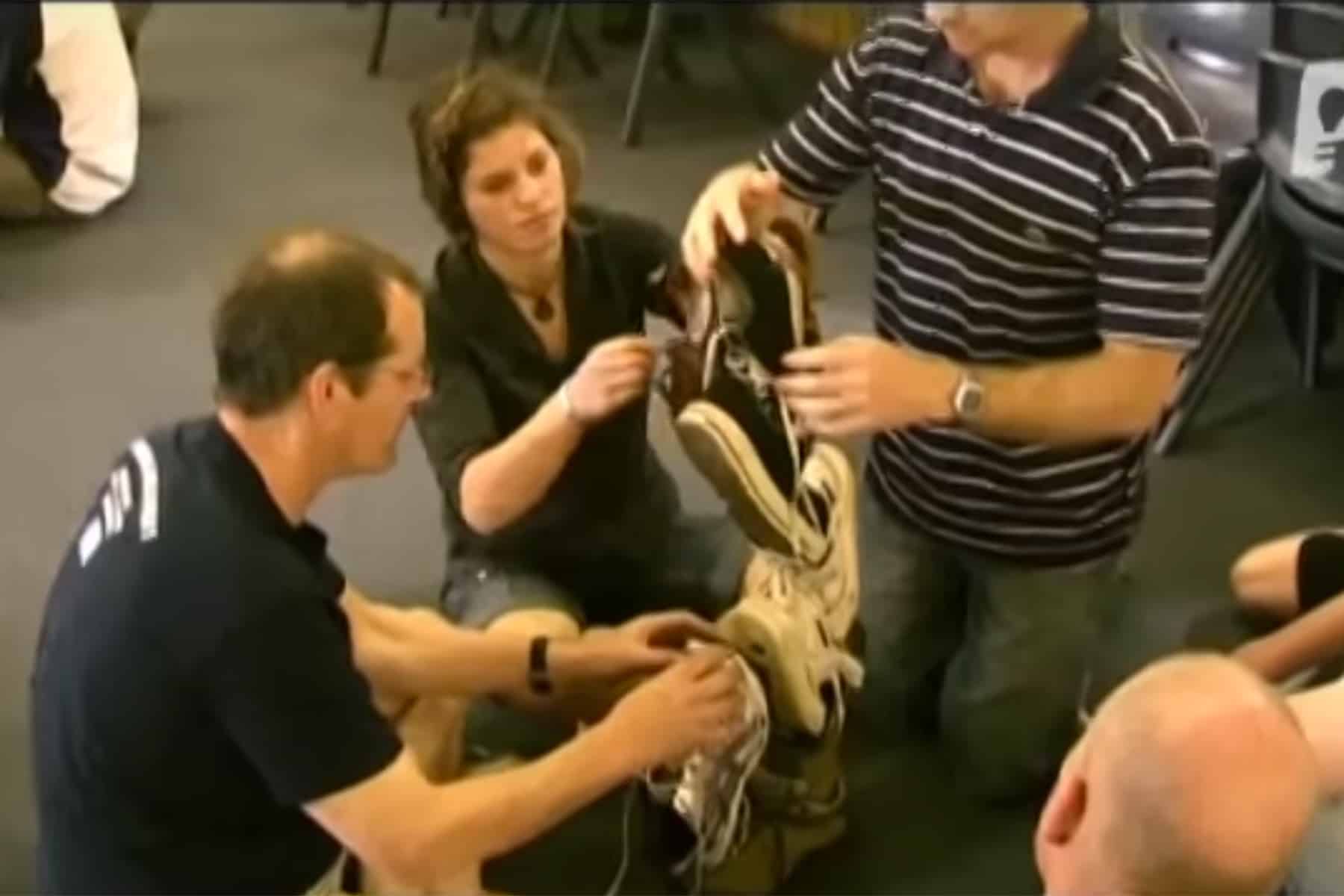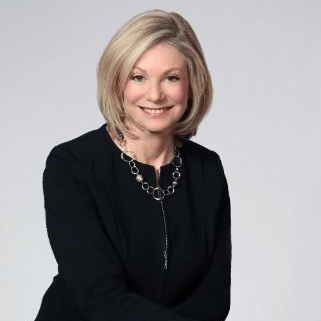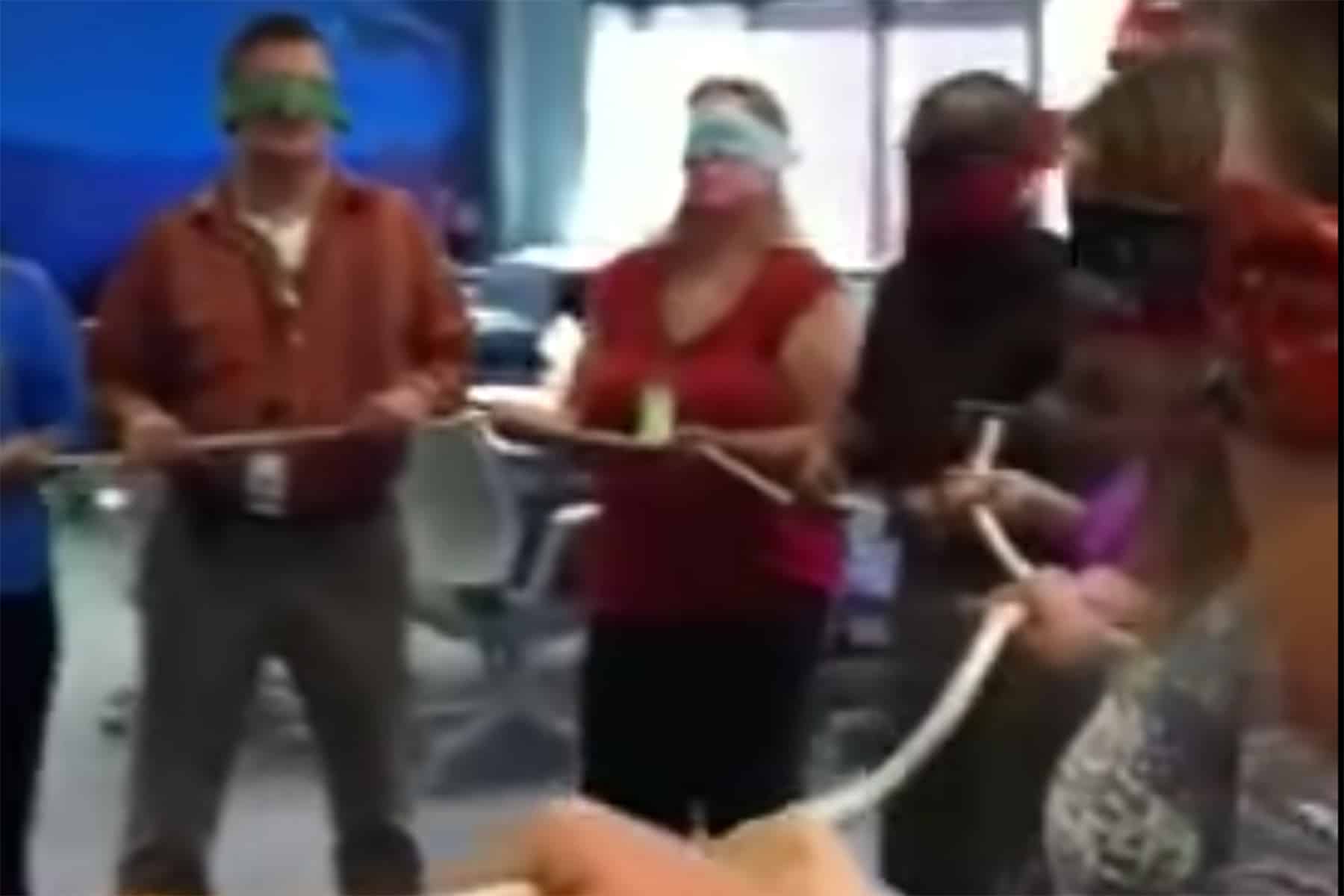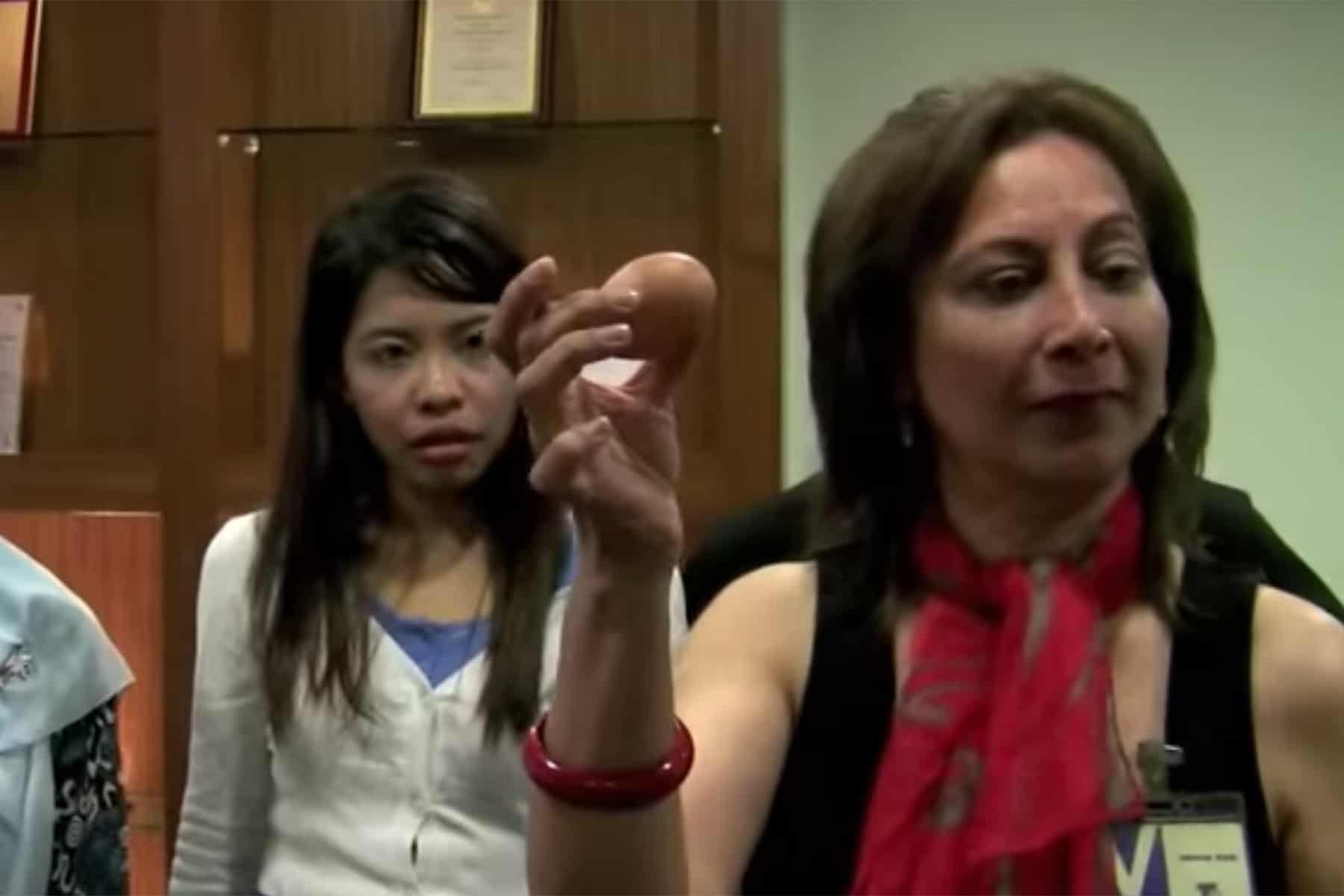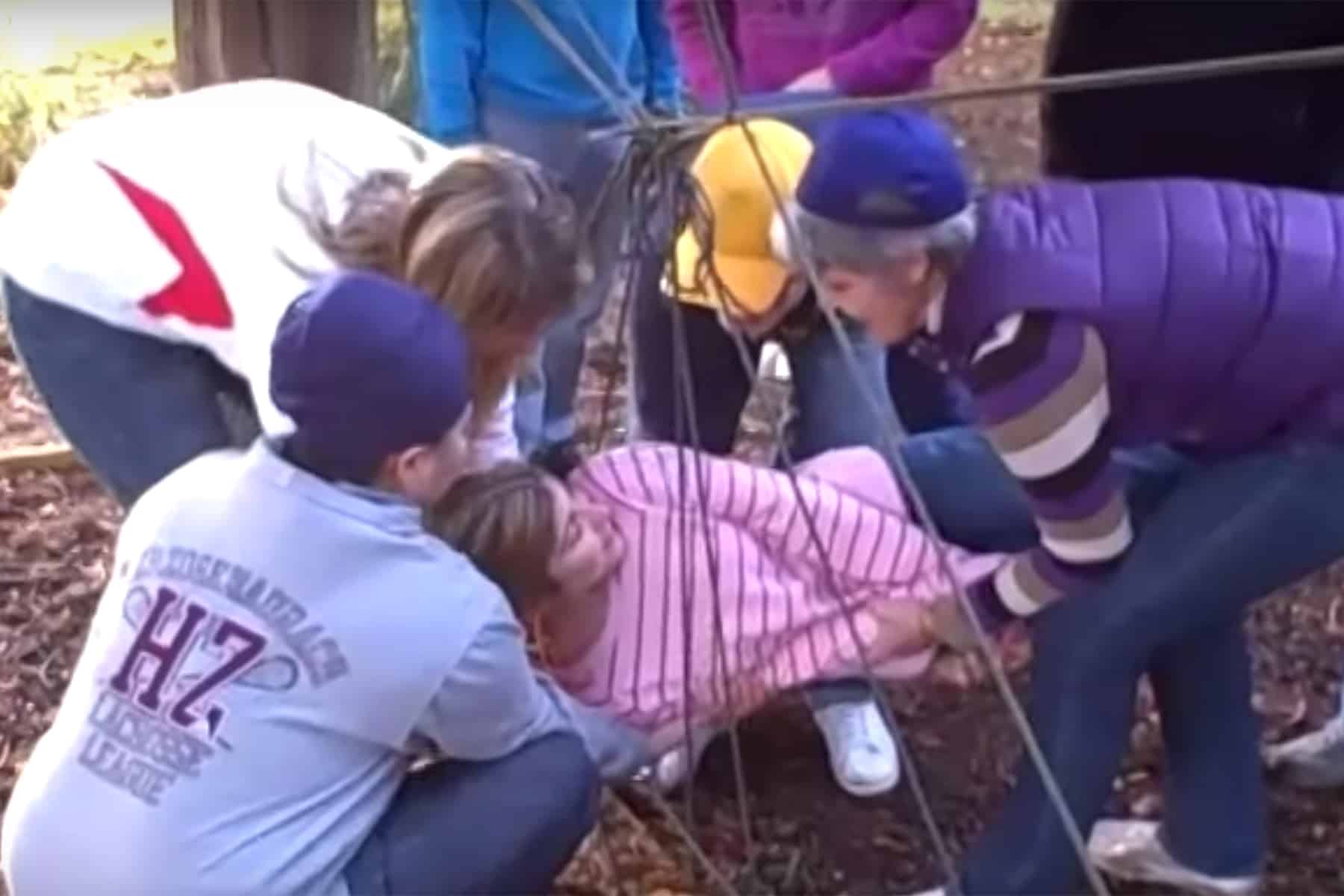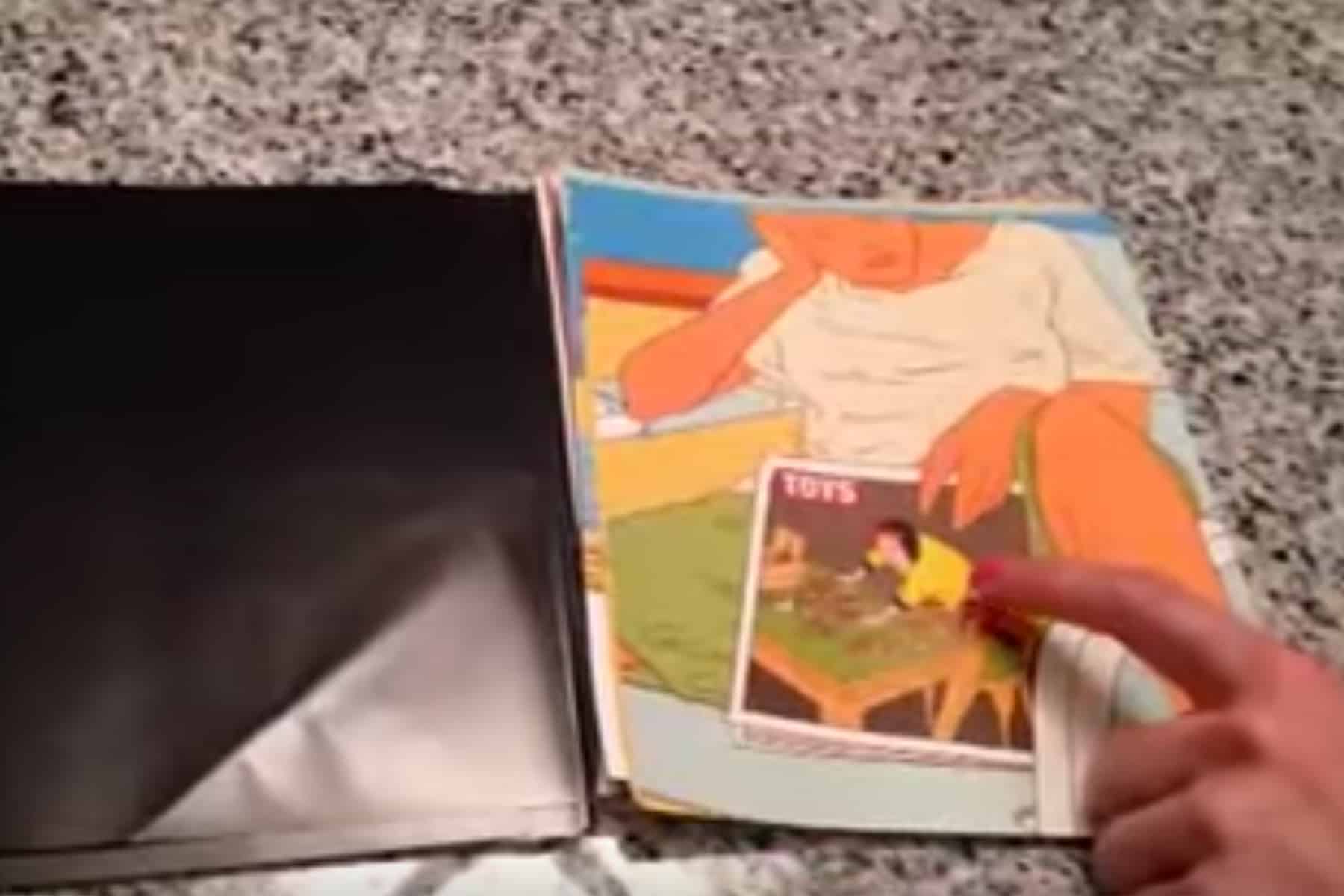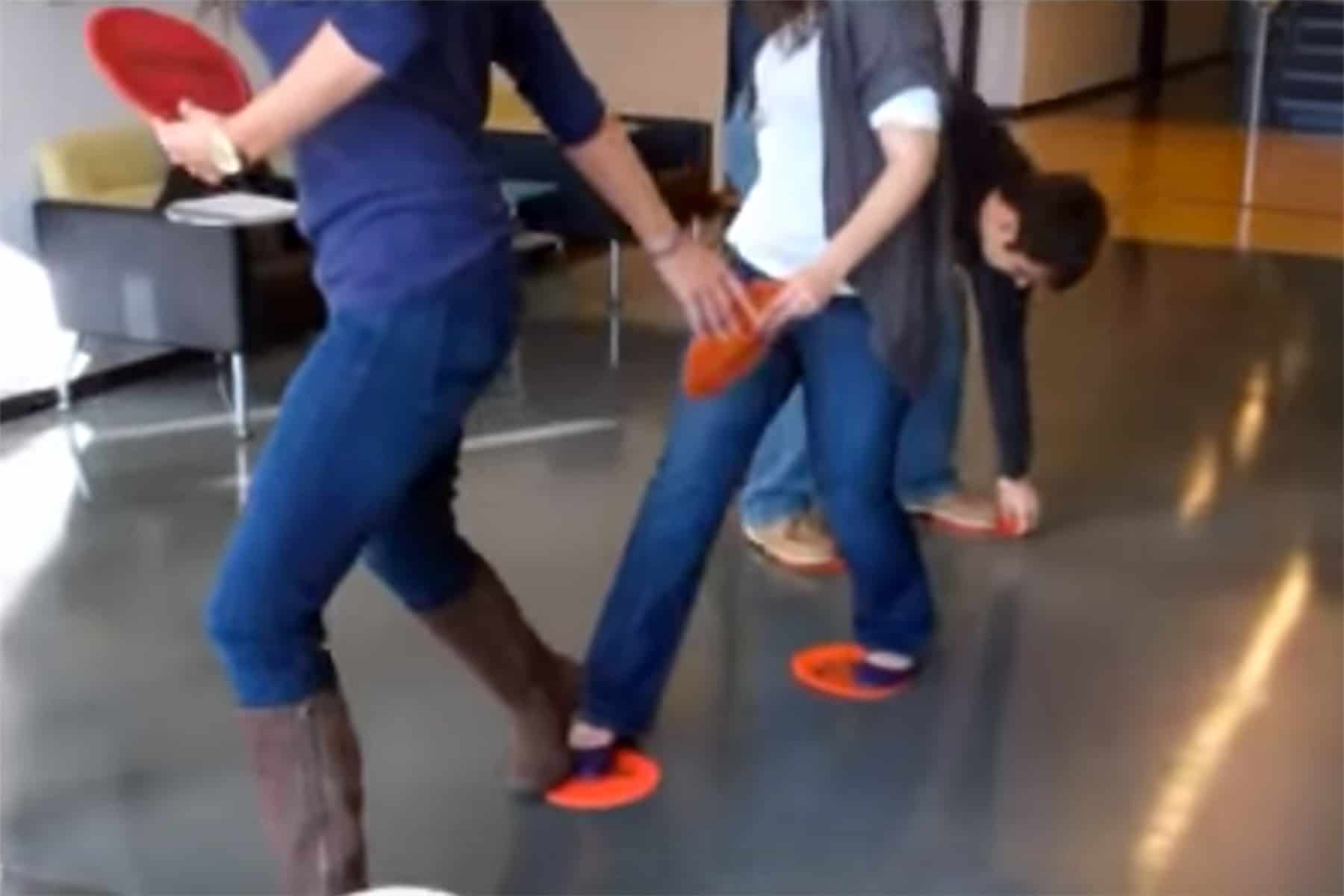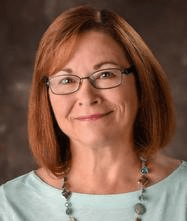Team-Building Icebreaker Games
Whether you have a completely new team to manage or are adding new members to an existing group, providing a stress-free way for people to get to know each other can make all the difference. Most of these games don’t require additional items and can be accomplished in under 20 minutes. Here are some icebreaker games that you can try to help get your team comfortable with each other.
Activity name: Truth and Lies
Objective: Icebreaker
Best for (group size): Small or medium groups
Time: 10-15 minutes
Materials needed: None
Have participants sit in a circle and face each other. Each player must state three truthful facts and one lie about themselves. The lie should seem realistic — nothing overly extravagant. Go around the circle and have each person share his or her three facts and one lie (in a random order). Other players must guess which “fact” is the lie.
This is a fun, light-hearted icebreaker that allows co-workers to learn more about each other.
Activity name: Take What You Need
Objective: Icebreaker
Best for (group size): Small or medium groups
Time: 15-20 minutes
Materials needed: Roll of toilet paper, handful of pennies
Have all participants sit in a circle. Without giving any other instructions, tell each person to take as many toilet paper squares and pennies as they think they will need. Once everyone has chosen their items, they must count how many total items (pennies and individual toilet paper squares) they have. This is how many facts—either personal or professional—they will have to share about themselves as you go around the circle.
This is a simple icebreaker that allows co-workers the chance to learn more about their colleagues.
Activity name: Life Highlights Game
Objective: Icebreaker
Best for (group size): Small or large groups
Time: 30 minutes
Materials needed: None
Have participants sit together in a large, open area. Ask them to close their eyes and picture some of the best moments of their lives. With their eyes still closed, instruct the group to decide the best 30 seconds of their life, or the 30 seconds of their life that they would like to relive—as if it were their “highlights reel.” Have everyone take turns sharing their highlight with the group.
This fun icebreaker is a great way for participants to learn unique, interesting facts about their co-workers, while allowing them to discover each other’s interests, experiences, and hobbies.
Activity name: Coin Logo
Objective: Icebreaker
Best for (group size): Small or medium groups
Time: 10 minutes
Materials needed: None
In a room with plenty of table/desk space, ask all participants to place any coins they have in their purse, wallet, or pockets on the table in front of them. Each person must create their own logo using only the coins in front of them and any other useful materials they might have with them (notebook, pencils, receipts, etc.). Participants should then take turns displaying and explaining their logos.
This activity is a unique tool to get participants thinking in a creative way. It also allows colleagues to learn more about one another.
Activity name: The One Question
Objective: Icebreaker
Best for (group size): Small to medium groups
Time: 15-20 minutes
Materials needed: None
Pair participants into teams, and then ask, “If you could ask just one question to discover a person’s suitability for (insert topic here), what would it be?” Sample scenarios could be entering a marriage, hiring a babysitter, or interviewing for a position. For example, if the scenario was hiring a babysitter, each team would have to come up with one question that would be the only thing they could ask a candidate when deciding if they should babysit their children.
This activity demonstrates the importance of asking the right questions and also highlights different priorities. It is a great way to get co-workers talking and thinking together.
Activity name: Classification Game
Objective: Icebreaker
Best for (group size): Small group
Time: 15 minutes
Materials needed: None
Divide the room into teams of four, while explaining the concept and negative impact of pigeonholing or typecasting. Participants should introduce themselves and their hobbies, favorite activities, etc. to their team. Teams must then decide how to classify themselves into smaller sub-groups using positive, fun categories (no negativity, prejudicial divisions, etc.). This can be anything from lovers of chocolate and vanilla to those who listen to pop music and country music.
This activity allows co-workers to get to know more about one another and exemplifies the bonds that they share. It allows them to think outside the box and work together to complete a task.
Activity name: Blind Count Off
Objective: Icebreaker
Best for (group size): Small or medium groups
Time: 10 minutes
Materials needed: None
Have all participants form a circle and face outward, away from one another. The group must see how high they can count as a team, with only one person saying a number at a time. If two or more people say the same number, the group must start again from one.
This is a fun icebreaker that focuses on the importance of listening to and communicating with one another.
Activity name: All Aboard
Objective: Icebreaker
Best for (group size): Small or medium groups
Time: 20-30 minutes
Materials needed: Rope
Rope off an area that all participants can reasonably fit into to represent a boat. Once all team members fit, the area should be made smaller, using a rope or tape to mark off the area. Participants must work together to find creative ways to get everyone inside the designated area, as the area gets smaller and smaller.
This icebreaker requires teamwork and allows for communication and leadership opportunities. Additionally, it is sure to get a lot of laughs!
Activity name: Birthday Line-Up
Objective: Icebreaker
Best for (group size): Small or medium groups
Time: 10-15 minutes
Materials needed: None
Have participants line up next to one another in order of birthday, height, or whatever category you choose. However, they must form the line without talking.
This is a quick icebreaker that focuses on effective communication and teamwork. It gives colleagues a chance to mingle in an informal atmosphere.
Activity name: Amoeba
Objective: Icebreaker
Best for (group size): Medium or large groups
Time: 15 minutes
Materials needed: None
Find an open space for all participants with plenty of room. Call out a number — this is how many people should be in a group. For example, if the number six is called out, players must get into groups of six as fast as they can. Whoever is left once all the groups are formed is out of the game. Continue until there is only one person left.
This is a fun way to get employees moving around and working together. It’s a great icebreaker for a quick break or before a meeting.
Activity name: Best and Worst
Objective: Icebreaker
Best for (group size): Small or medium groups
Time: 10-15 minutes
Materials needed: Paper, pens
Have participants gather in a circle. Give each one a piece of paper, and instruct them to write down one “best” thing they want to learn about the group (for example, What’s the best present you’ve ever received?), and one “worst” thing they want to learn (for example, What’s the worst meal you’ve ever had?). Read the questions aloud and have everyone go around the circle and answer.
This is a fun and engaging activity that allows colleagues the opportunity to learn more about one another.
Activity name: Salt and Pepper
Objective: Icebreaker
Best for (group size): Any group size
Time: 15 minutes
Materials needed: Pairs of cards
Create game cards by coming up with pairs of objects that go together (for example, salt and pepper, macaroni and cheese, Donald Duck and Daisy Duck). Each sheet should only have one word. Give each participant a card, and tape it to their back so they can’t see it. They must find their match by asking others in the group only yes or no questions. Once a match is made, they should sit together and learn a few interesting facts about one another.
This is an icebreaker that allows people from different areas, departments, or levels to interact with one another. It is simple to play, but also fun and engaging for all participants.
Activity name: Celebrity/Stereotype Party
Objective: Icebreaker
Best for (group size): Small or medium groups
Time: 20 minutes
Materials needed: Name tags, markers
Each person should be given a nametag sticker with a specific personality written on it; this can be anything from a teacher to a homeless person. Participants should not be allowed to see what’s written on their tag, which will be placed on their back so the rest of the team can see it. Then, everyone must walk around the group asking yes or no questions in order to decipher who or what their label says.
This is an entertaining icebreaker that allows colleagues the chance to interact and mingle. It also teaches the impact that stereotyping and typecasting can have in social situations.
Activity name: Beach Ball Toss
Objective: Icebreaker
Best for (group size): Small or medium groups
Time: 15 minutes
Materials needed: Beach ball with questions
Buy a beach ball and write various questions all over it. These questions can range from fun topics (for example, What is your favorite food?) to more serious and work-oriented subjects (for example, What would you do if you had a conflict with your supervisor?). Have participants stand in a circle and toss the ball. Players must answer whichever question their pinky finger lands on.
This is a quick and exciting way for colleagues to learn more about one another. It pushes people out of their comfort zone in a way that allows others to understand them better.
Activity name: What’s In a Name?
Objective: Icebreaker
Best for (group size): Small or medium groups
Time: 15 minutes
Materials needed: None
Have everyone gather in a circle or open area. Go around the circle and have each person explain the meaning behind his or her name, any nicknames they have or had growing up, and anything else related that they’d like to share.
This is a great way for colleagues to learn more about their peers, and it’s a quick, easy way to get conversation flowing.
Activity name: Classify This
Objective: Icebreaker
Best for (group size): Small to medium groups
Time: 15 minutes
Materials needed: Miscellaneous objects
Have participants sit in groups of three or four, and give each group the same random objects. Teammates must work together to categorize these seemingly unconnected items in unique ways. After ten minutes, teams will reconvene to explain why they grouped the objects the way that they did.
This is a simple icebreaker that requires teamwork and creative thinking. It allows colleagues to see how others see things and encourages thoughtful conversation.
Activity name: Story Around the Circle
Objective: Icebreaker
Best for (group size): Small or medium groups
Time: 20 minutes
Materials needed: None
Have all participants sit in a circle. Start with a pre-planned line for the beginning of a story. This sentence can be a focused story (work-related, holiday-related, etc.), or participants can have complete freedom over the topic. Have each person take a turn adding onto the story. The last person in the circle will complete the ending.
This icebreaker brings out the creative side of participants and encourages everyone to work together to make their individual parts a significant aspect of the bigger picture. It’s super easy to play and perfect for before a meeting or leading into a longer activity.
Activity name: Alphabet Actors
Objective: Icebreaker
Best for (group size): Small to medium groups
Time: 15 minutes
Materials needed: None
Divide participants into groups of three or four. Call out a letter of the alphabet, and have each group work to form that letter with their bodies (either standing up or laying on the ground).
This quick icebreaker makes a perfect stretch break or meeting introduction. It’s a fun way to get players working together fast and effectively.
Activity name: Dream Trip
Objective: Icebreaker
Best for (group size): Small or medium groups
Time: 5-10 minutes
Materials needed: None
Divide participants into pairs or small groups. In partners, have each person share his or her dream experience or vacation if they had one month of free time and an unlimited budget. Participants must then describe their partner’s dream trip to the rest of the group.
This quick icebreaker is a great way to learn more about co-workers in an informal setting, and offers insight into other people’s thought processes and priorities.
Activity name: Zip Zap Zop
Objective: Icebreaker
Best for (group size): Small or medium groups
Time: 15 minutes
Materials needed: None
Have players stand in a circle. They must take turns pointing at one another and say, “Zip,” “Zap,” and “Zop,” but they must remember to say them in this order. If someone says the words out of order, he or she is out of the game. Continue until there is only one person left.
This is a fun icebreaker that is a lot trickier than it seems. It’ll keep players laughing while encouraging a strong sense of focus and determination.
Activity name: Penny for Your Thoughts
Objective: Icebreaker
Best for (group size): Small or medium groups
Time: 20-30 minutes
Materials needed: Pennies
Gather a bunch of pennies, making sure that the oldest penny isn’t older than your youngest employee. Have participants sit in a circle and randomly select a penny from the pile. Players should go around the circle and describe a memorable event that happened in their life during the year on the selected penny.
This is a simple icebreaker that allows co-workers to learn more about one another. This is a good game for before or after meetings, or for a quick icebreaker at lunchtime.
Activity name: Call of the Wild
Objective: Icebreaker
Best for (group size): Medium or large groups
Time: 10 minutes
Materials needed: Cards with animal names on them
Give each person a card with the name of an animal on it. You’ll need to make sure that at least two cards are given out for each animal. On your signal, players should close their eyes and begin making their animal’s noise. The goal of the game is for each player to find their match (who should be making the same noise).
This silly activity is a great way to break the ice. It’s quick, and a perfect icebreaker for before a longer activity that’s sure to leave everyone laughing.
Activity name: Common Threads
Objective: Icebreaker
Best for (group size): Small or large groups
Time: 15 minutes
Materials needed: None
Divide the group into sub-groups of four to six people. Instruct each group to find five things that all members have in common. This can be a favorite food, a place they’ve been, a movie they’ve seen… anything that links them together. Have the groups share their connections with the rest of the team.
This is an ideal way for colleagues to get to know one another and see what they have in common.
Activity name: Bears, Cowboys, and Ninjas
Objective: Icebreaker
Best for (group size): Small or medium groups
Time: 15-20 minutes
Materials needed: None
Here are the rules of this new version of “Rock, Paper, Scissors:” bears eat ninjas, ninjas beat up the cowboys, and the cowboys shoot the bears. The bears are represented with a roar, the ninja is represented by a ninja pose, and the cowboy is represented by positioning fingers in a gun motion.
This is an easy way for co-workers to let loose and have some fun. It’s simple, hilarious, and provides people with an opportunity to reminisce about their childhood years.
Activity name: Cluck and Clap
Objective: Icebreaker
Best for (group size): Small or large groups
Time: 10-15 minutes
Materials needed: Index cards
Create cards with two different symbols on them (For example, “X” and “O,” or checkmark and “X,” etc.). One symbol denotes clucking, and the other denotes clapping. Shuffle the cards, arranging them in a completely random order. Have the group go through the pattern and try their best to complete it in sync. For more challenging variations, re-shuffle the cards or make the rhythm faster.
This is an icebreaker that is sure to have everyone laughing. It is reminiscent of music class in elementary school, but it also teaches the importance of attention to detail and proper focus.
Activity name: All Adrift
Objective: Icebreaker
Best for (group size): Small or large groups
Time: 5-10 minutes
Materials needed: None
Divide participants into even groups. Explain the scenario: your group was on a cruise when the ship suddenly set on fire. You have just enough time to grab a few items. As a group, discuss which items on the ship would be most useful, and compile a list of ten items your group would choose to bring.
This icebreaker gives participants a glimpse into the thought processes of their colleagues. The discussions allow participants to get to know one another better, as well.
Activity name: Mad Libs Mission Statement
Objective: Icebreaker
Best for (group size): Small or large groups
Time: 20 minutes
Materials needed: Mad Libs sheet
Create a company mission statement (or use your company’s existing one) in the style of a Mad Lib activity page. You can do this by removing words and leaving the space blank with only the type of word remaining (for example, noun, adjective, verb). Divide participants in groups and have them complete this Mad Lib by asking for the type of word without giving context. Read the results out loud, knowing that this first round will sound silly. Next, have participants fill in the statement with more accurate words to complete the mission statement.
This activity is a great way to break the ice and get the group laughing, while also focusing on the importance of the company’s mission statement.
Activity name: Telephone, On Paper
Objective: Icebreaker
Best for (group size): Small or medium groups
Time: 15-20 minutes
Materials needed: Paper, pencils
Gather participants in a circle, and have each person draw something of their choosing on a piece of paper. They can’t tell anyone else what they’re drawing. Next, they must pass the paper to the person to their right, who should fold the paper to hide the drawing and write what they think the picture depicts. This should continue, with each person in the circle reading the description, folding the paper over, and drawing a new picture of what they think the previous person is describing. At the end, each person reveals what their original drawing was supposed to depict.
This icebreaker focuses on creativity and individual interpretation. It is sure to be a hit, with far-fetched interpretations leaving the group crying tears of laughter.
Activity name: Have You Ever?
Objective: Icebreaker
Best for (group size): Any group size
Time: 15 minutes
Materials needed: Spot markers (tape, circles)
Have participants stand in a circle, with one person standing in the middle. This person must ask a question starting with “Have you ever…?” Some examples include: Have you ever been to Hawaii? or Have you ever eaten Chinese food for breakfast? Those who answer yes must move to a vacated spot in the circle. Whoever is left becomes the one to ask the next question.
This is a great way for colleagues to get to know more about one another.
Project Management Guide
Your one-stop shop for everything project management

Ready to get more out of your project management efforts? Visit our comprehensive project management guide for tips, best practices, and free resources to manage your work more effectively.
Teamwork/Communication Games
The activities listed in this section are designed to help improve communication skills between colleagues. There are a variety of options that range in time from just a few minutes to a couple of hours. These team-building exercises can foster creativity and help strengthen bonds among co-workers.
Activity name: Game of Possibilities
Objective: Creativity, Teamwork
Best for (group size): Small or large groups
Time: 5-6 minutes
Materials needed: Miscellaneous objects
Give a random object to one person in each group. Each person must take a turn going up to the front of the room and demonstrating a use for that object without speaking. The team must then guess what the player is demonstrating.
This activity fosters creativity and allows colleagues to work together in a fun, light-hearted environment.
Activity name: Tennis Ball Team Builder
Objective: Teamwork
Best for (group size): 5-12 people
Time: 20-45 minutes
Materials needed: One tennis ball
Contributed by: Beth Gordon, Beth Gordon Coaching + Consulting
Assign an observer who notes team dynamics, keeps time, and gives direction
Have the group form a circle and give one person the tennis ball. Explain the rules for part one, “The Process:”
- Everyone must receive the ball
- You cannot pass the ball to the person next to you
- The ball must return to the person who started with it
- The ball must travel through the air
- The ball cannot be rolled across surfaces, floors, walls, tables, or chairs
- Timekeeper announces time taken
Now that you understand the rules let’s create a product. Explain the rules for part two, “Creating the Product:”
- One Product = eight rounds of passing the ball in the correct sequence
- If you drop the ball, you must start the round again
- The timekeeper announces the time taken to complete a product, and asks the group to cut the time in half
- Repeat until the team can create the product in the least amount of time
This activity is a great kick-off to a team meeting where you want to create an atmosphere of innovative thinking and teamwork. Also, the observer can ask debriefing questions, such as:
- What roles did people play? Did anyone emerge as a leader in the process? What other roles evolved within the group?
- How did you feel when you had to disband the process and try things differently?
- When did you feel like it was okay to stop and be satisfied with the outcome?
- How do you feel with the result?
Activity name: Scavenger Hunt
Objective: Teamwork, Fun
Best for (group size): Small or large groups
Time: One to two hours
Materials needed: Scavenger hunt list
Divide players into pairs or teams. Give each team a list of tasks to complete - these tasks can range from silly (for example, take a selfie with a stranger) to extremely challenging (for example, find and take a picture with a local celebrity), and award points based on difficulty. Whoever has the highest number of points, wins.
Scavenger hunts are a fun way to get colleagues to work together in an environment outside of the office. They allow teams to focus on the strengths of the individuals in their group, and they’re tons of fun!
Activity name: Color Blind
Objective: Communication
Best for (group size): Any size
Time: About 45 minutes
Materials needed: Blind shapes blocks such as these or these
Contributed by: Marianne Scippa, Scippa & Associates, Inc.
This game was developed in Great Britain for training air traffic controllers on communication skills. Divide your group into teams of ten or fewer people with one set of blind-shape blocks for each group.
As Marianne Scippa explains, “The goal is simple: The team must come to a consensus on the shape and color of two missing pieces that the facilitator has removed from the set.”
Groups sit in a close circle with each participant blindfolded. Two pieces have been removed from the set and the remaining pieces are distributed. The mission is for the group to establish the color and shape of the two missing pieces. “They may not exchange, pass, or physically share the pieces with anyone. The only question the facilitator answers is about the color of each piece. What ensues is a complex process of discovery with a mix of determination, competition, collaboration, humor, and some frustration,” Scippa said.
In a debriefing afterward, the group discusses the strategies they used for organizing the information and how they developed a common meaning.
Activity name: Geocache Adventure
Objective: Teamwork, Fun
Best for (group size): Small or large groups
Time: One to two hours
Materials needed: Smartphones
Divide participants into equal groups, ensuring that at least one member of each group has a smart device with GPS capabilities. Teams will have one hour to find as many geocaches as they can. Explain to the group that geocaching is like a scavenger hunt, but you use GPS coordinates to find items. Have teams reveal their findings at the end of the activity.
This modern take on a scavenger hunt fosters teamwork while allowing colleagues to get to know one another better. It is a fun, exciting adventure that will leave participants with lasting memories.
Activity name: The Mine Field
Objective: Communication
Best for (group size): Small group (even numbered)
Time: 15-30 minutes
Materials needed: Bottles, cans, cups, or other handheld objects, blindfolds
Find an open space, such as a park or empty parking lot. Place objects (the “mines”) in random spots across the area. Participants must be paired into teams of two, and one member of each team must wear a blindfold. The other person leads the blindfolded person from one side to the other, without stepping on any “mines.”
This exercise emphasizes the importance of utilizing supreme communication strategies and listening effectively. It teaches that trust and communication are key aspects of success.
Activity name: Blind Drawing
Objective: Communication
Best for (group size): No limit, but requires a minimum of four people
Time: 10-15 minutes
Materials needed: Pictures, pen, paper
Divide the group into pairs. Each pair needs to sit on the floor, back-to-back. One person will have the pen and paper, and the other will have a picture. The teammate with the picture must describe the picture to the best of their ability, without actually saying what’s in the picture. The person with the pen and paper draws what is being described to them.
This game showcases the importance of communication, while also sharing how interpretation plays a role in situations. It promotes listening and patience, while also offering plenty of laughs!
Activity name: Mirror, Mirror
Objective: Teamwork
Best for (group size): Small groups of people who work together
Time: 10-15 minutes
Materials needed: Hand mirror for each participant
Contributed by: Jeffrey Byrd, Jeffrey Byrd Coaching
Participants start by thinking of each person on their team and writing down their greatest strengths and contributions. They keep these secret. Each person then looks into the mirror, without conversation, for 30 seconds. At the end of the 30 seconds, they silently write down what they saw in the mirror, what they thought about what they saw, and what they felt about what they saw. This is also secret.
Then play a video from the Dove Self-Esteem Project. After the video, each person shares what they had written about each other’s strengths and contributions. Get a volunteer to compile the list and send it to everyone so they can print it and keep it in a prominent place. This will help team members be encouraged and reminded of their strengths, value, and contributions during difficult days.
Activity name: Build It Higher
Objective: Teamwork, Communication
Best for (group size): Small or large groups
Time: 15-20 minutes
Materials needed: Tape, marshmallows, spaghetti
Divide players into groups of four or five and give each group the same amount of supplies. The teams must work together to create the highest structure they can, using only the tape, marshmallows, and spaghetti noodles provided.
This activity is a fun and creative way to improve individuals’ ability to work as a team. It allows natural leaders to step forward and showcase their skills.
Activity name: Zen Counting
Objective: Teamwork, Communication
Best for (group size): Small or medium groups
Time: 20 minutes
Materials needed: None
Have the group count to ten — with a twist. Only one person can talk at a time, no one can say two numbers in a row, and no gestures or cues are allowed. If any of these rules are broken, the group must start over. For example, if three people all say “four” simultaneously, the group must start again at one.
This game requires a lot of patience and attention, and encourages participants to work together as a team to figure out a way to complete the task.
Activity name: Helium Stick
Objective: Teamwork, Communication
Best for (group size): Small and medium groups
Time: 15-20 minutes
Materials needed: Thin stick
Divide participants into two groups, and have each group stand in a straight line facing one another. Have each person hold out their right index finger, which they will use to hold the stick. The goal is to lower the stick, nicknamed “helium stick” for the way it appears to be rising, to the ground without anyone letting go.
This is a quick game that encourages active participation and teamwork. It requires everyone to work together toward a single goal.
Activity name: Do You See What I See?
Objective: Communication, Teamwork
Best for (group size): Small or medium groups
Time: 30 minutes
Materials needed: Sheets of paper, pencils
Choose one participant to go to the front of the room and hold a sheet of paper with various shapes drawn/printed on it. Without letting the rest of the players see, they must do their best to describe the sheet, while everyone else tries to recreate the sheet based on the descriptions given. Once they’re finished, everyone should hold up their drawings and see how they compare to the original.
This activity is a fun, light-hearted way to show how perception is an important aspect of communication.
Activity name: Active Listening Game
Objective: Communication
Best for (group size): Any size
Time: 10-15 minutes
Materials needed: None
Contributed by: Teresa Wallace, Agility Leadership Coaching
Gather your team for what they believe to be just another staff meeting. Create a long document filled with mind-numbing, jargon-filled speech that talks vaguely about company goals. However, sprinkle in some sentences that say something else entirely. These sentences should contain instructions or information that they will be quizzed on later.
Begin reading the document to your team in a monotone. The goal is to get them to tune you out. Do not over-emphasize the “real” sentences. When you are finished, hand out paper to each team member. Then, ask them to write down what they thought you talked about. If your real sentences contained random information, quiz them on that. Discuss who heard what, and see who was able to actively listen.
This exercise is aimed at improving communication and reducing conflicts, since many conflicts arise because team members don’t really listen. It shows the importance of listening to verbal and nonverbal communication. They can discuss why they tuned you out, and what you could have done to keep them interested.
Activity name: Blindfold Retriever
Objective: Communication, Teamwork
Best for (group size): Small or medium groups
Time: 15-20 minutes
Materials needed: Blindfolds, miscellaneous objects
Divide the group into smaller teams of three or four. One team member should be blindfolded as teammates verbally guide them around the room to find certain objects. Participants take turns being blindfolded and guided.
This activity highlights the importance of communication and careful listening. It is a fun way to get teams working together and strategizing with one another.
Activity name: Earthball
Objective: Teamwork, Communication
Best for (group size): Small or medium groups
Time: 30 minutes
Materials needed: Balloon or beach ball
Have all players stand in a circle, then throw the beach ball or balloon into the center of it. Together, as a team, the players must prevent the ball from touching the ground and try to get as many hits as possible. No one can touch the ball twice in a row.
This game encourages teamwork while also relying on strong communication skills. It is a fun way to get employees thinking about the importance of communication and goal setting.
Activity name: Blindfold Tent Build
Objective: Communication, Teamwork
Best for (group size): Small groups
Time: 30-45 minutes
Materials needed: Tent set, blindfolds
Blindfold all participants. Without being able to see, they must work together to put up a tent. For larger groups, divide into smaller groups and use multiple tent sets or assign areas of focus.
This challenge is a great way to promote effective communication skills in a fun, lighthearted environment. It allows leaders to rise to the occasion and fosters trust in one another.
Activity name: Group Juggle
Objective: Teamwork, Communication
Best for (group size): Small group
Time: 30 minutes
Materials needed: Juggling balls
This is a fast-paced activity that relies on cooperation and communication. It requires players to work as a team and develop a strategy for success.
Activity name: Scrambled Puzzle
Objective: Teamwork, Communication
Best for (group size): Small or large groups
Time: 30 minutes
Materials needed: Simple children’s puzzle (large pieces)
Have all participants wear blindfolds and sit around a table with puzzle pieces in front of them. Choose one person to sit outside of the group without a blindfold. This person has the same puzzle, but they cannot see the progress of the rest of the group. The group must work to complete the puzzle, with the person without the blindfold providing tips or instructions.
This is a fun activity that requires strong communication and attention to detail. It also relies on players working together as a team to complete a common goal.
Activity name: Hole Tarp
Objective: Teamwork, Communication
Best for (group size): Small and medium groups
Time: 20 minutes
Materials needed: Tarp, ball
Have participants gather around the tarp, which has a hole in it, and grab a section. Players must work together to navigate the ball around the tarp and avoid having it fall through the hole for as long as possible. For larger groups, split into teams with multiple tarps and have a competition.
For this activity, players must think on their feet and learn to strategize with others. It’s a fun and exciting way to work on communication skills.
Activity name: Parties That Cook
Objective: Teamwork, Fun
Best for (group size): Small or medium groups
Time: One hour
Materials needed: Cooking Ingredients
Divide players into smaller groups of three to five people. Have each group start at a different station, with instructions to cook a specific dish at each station. For example, one station can be creating stir-fry dishes, while another might be baking cookies. If cooking in an area with a stovetop and oven is not an option, opt for some stations that don’t require cooking, such as making sushi or preparing no-bake cookies.
This is a great way to break up the monotony of the day-to-day routine. The activity highlights the importance of teamwork in a fun and creative way.
Activity name: Concentration
Objective: Communication
Best for (group size): Small or medium groups
Time: 15 minutes
Materials needed: None
Divide the group into two teams. Instruct each team to form even lines facing one another. Give all participants a minute to study their partner, then have one line turn around. The other line now has one minute to change ten things about themselves, such as taking hair out of a ponytail, swapping a ring to the other hand, or rolling up a sleeve. Once these changes are made, the other line must turn back around and try to identify all the changes.
This game tests communication abilities and can also be utilized as a fun icebreaker. It requires participants to pay attention to detail while forcing them to focus on things they might not normally notice.
Activity name: Calculator
Objective: Teamwork
Best for (group size): Small or medium groups
Time: 10-15 minutes
Materials needed: Number cut outs, timer
Create large circle cutouts (big enough for someone to stand on) and number them one through 20. Have the group stand at a designated starting point away from the numbers. At your signal, players from one team must run over to the “calculator” and find each number in order, standing on them as they call out the number. Every person in the group must touch a number at least once. The group with the fastest time wins the challenge.
This is an activity centered on teamwork and communication. It allows for natural leaders to shine while providing players an opportunity to strategize and work together to find the most effective way to approach the challenge.
Activity name: Grab Bag Skits
Objective: Teamwork, Communication
Best for (group size): Small or large groups
Time: One hour
Materials needed: Bags of miscellaneous objects
Divide participants into small groups of four to six people. Each group will be given a “goodie bag” of randomly selected objects, which they must use to create a skit. Each group has five minutes to create a storyline based on the objects. Then, the groups will take turns performing their skits.
This activity is centered on teamwork while also allowing for fun and creativity. It is a great opportunity for leaders to step up and participants to use their strengths to their group’s advantage.
Activity name: Jedi Mind Trick
Objective: Communication, Teamwork
Best for (group size): Medium or large groups
Time: 20 minutes
Materials needed: None
Gather all players in a circle, with one person standing in the middle. This person’s goal is to take someone’s spot in the circle. Participants must attempt to switch places across the circle with someone else, without losing their spot, and use only eye contact to communicate with one another.
This game requires a great deal of attention and focus. It fosters communication abilities and promotes the importance of nonverbal cues within the realm of communication.
Activity name: Group Stand Up
Objective: Teamwork, Communication
Best for (group size): Small to medium groups
Time: 20 minutes
Materials needed: None
Divide participants into pairs. The pairs must sit with their backs to one another and arms linked, and then try to stand up together without untangling their arms. Once a pair accomplishes this goal, they can be placed in groups of four for a more difficult challenge.
This activity fosters communication skills by having pairs work together to find an effective way of standing up. It requires teamwork and creative thinking to meet this goal.
Activity name: Poker Tower
Objective: Communication, Teamwork
Best for (group size): Small or medium groups
Time: 30 minutes
Materials needed: Playing cards, scissors
Divide players into groups of two to five people each. Give each group a pack of playing cards and a pair of scissors. Teams must work to build the tallest tower they can, using only the cards and scissors.
This challenge is a fun way to get players to work together and strategize. It promotes the importance of communication with some friendly competition thrown into the mix.
Activity name: Photo Finish
Objective: Teamwork, Communication
Best for (group size): Small to medium groups
Time: 30 minutes
Materials needed: Tape or rope (for line)
Divide the group into teams and find an open space. Mark a finish line on the floor using tape or rope. Then, have teams work together to cross the finish line - players on each team must all cross the line at the exact same time. If anyone is out of sync, the team must start over and try again.
This challenge involves thorough communication and planning. Players must work as a team to decide on the best approach, and natural leaders emerge to take charge.
Activity name: Shoe Tower
Objective: Teamwork
Best for (group size): Small to medium groups
Time: 10 minutes
Materials needed: None
Participants should be divided into equal groups. Using the shoes of each team member, they must construct the tallest tower possible. The team with the tallest tower at the end of ten minutes wins.
This is a quick, simple activity that fosters teamwork while getting lots of laughs. It is a way for colleagues to get to know one another as they work together to build the tallest tower.
Activity name: Company Concentration
Objective: Teamwork, Communication
Best for (group size): Small or large groups
Time: One hour
Materials needed: Concentration cards
Create Concentration game cards that contain photos relevant to your company (logo, products, team photos, etc.). Divide participants into pairs, giving each a set of cards. Have players start with all cards facing down. They must flip over two cards at a time in an effort to find matches. The person who makes the most matches is the winner.
This activity is a fun way for new employees to learn more about the company. It is fast-paced and competitive, perfect for a lunchtime meeting or office event.
Looking for ways to keep your remote workforce connected?
Download our latest ebook to discover the top 10 helpful tips to establish and maintain company culture across your distributed teams.
Problem-Solving Team-Building Games
Interested in getting your teams to work together better? These problem-solving games will help co-workers think outside of the box to solve generic or company issues while fostering team communication. Some games require a small amount of time and minimal supplies, while others are a bit more elaborate and will take more time to complete.
Activity name: Lego Building Challenge
Objective: Problem-Solving, Communication
Best for (group size): Small or medium groups
Time: One hour
Materials needed: Legos
Contributed by Shelley Hammell, Sage Alliance, Inc.
Divide the group into teams of five to eight members. The facilitator instructs each team to build a structure with the Lego blocks. However, the facilitator provides limited information on what the finished structure should look like. This version can usually be conducted in 60 minutes, from start to finish, including a larger group de-brief and highlights the same team building skills.
In a variation on this game, Hammell provides teams with limited information and has them solve a company business challenge. At the conclusion, each team presents their rationale and the process for how they arrived at their solution, and a winner is selected.
Activity name: Lego Replication
Objective: Problem Solving, Communication
Best for (group size): Small or medium groups
Time: 30 minutes
Materials needed: Legos
Form groups of four to six people. Build one model construction out of Legos, initially hidden from the view of participants.
In each group, assign the roles of builder, runner, and looker; everyone else is an observer. The builder gets a bag of Legos and is the only person who may touch them.
The looker gets to see the model Lego construction and tells the runner what to do to recreate it. The runner is not allowed to see the model construction or touch the Legos. He or she tells the builder what the looker instructed. (The looker is not allowed to see what the builder is creating, and the builder is not allowed to speak or see the model.)
The builder tries to replicate the construction of the model. When the runner can’t remember any more details or wants to confirm a detail or ask questions, the runner and looker may talk about the details.
The observers make notes about what worked in the process, what didn’t, and how the players handled the pressure. The observers are not allowed to participate in the building process or talk.
A timer is set for ten or 15 minutes. At the end, each group gathers and compares their finished construction to the model. They discuss how it worked and how successful they were, and identify any lessons for improved communication.
The large group reconvenes and reviews the highlights. Each group briefly recaps their experience.
Activity name: Human Knot
Objective: Problem-Solving
Best for (group size): Small or medium groups
Time: 15 minutes
Materials needed: None
Form a circle with everyone facing one another. Stand shoulder to shoulder. With their right hand, everyone must grab the hand of someone standing across the circle from them. Then, repeat the process with left hands, making sure everyone is holding the hands of two different people. The team must work together to untangle everyone from this “knot” without letting go of the hands they’re holding.
This is a simple game that focuses on problem solving and allows natural leaders in the group to flourish. It highlights the importance of teamwork while allowing for some fun mingling amongst co-workers.
Activity name: The Perfect Square
Objective: Problem-Solving, Communication
Best for (group size): Small group
Time: 30 minutes
Materials needed: Blindfolds, rope
Have all players stand in a circle and hold a piece of the rope. They must put their blindfolds on, and then set the piece of rope they are holding on the ground. Players must walk away from the rope, then come back and work together to try to form a square. To make it more difficult, set a time limit to complete the square.
This short exercise focuses on stellar communication, as players can’t rely on visual cues or monitoring problems. The activity hones problem-solving skills in a fun, unique way.
Activity name: The Egg Drop
Objective: Problem-Solving
Best for (group size): Small or medium groups
Time: One to two hours
Materials needed: Eggs, cardboard, duct tape, pencils, rubber bands, etc. (miscellaneous office supplies)
Divide players into several even groups of three to five people. Each team is given an egg and the same group of supplies. They have the task of building a contraption that will keep an egg from breaking when dropped. Once time is up, egg contraptions are tested to see which teams (if any) built an effective protection system.
This task allows employees to focus on each other’s strengths in order to work most effectively. It hones problem-solving skills while allowing for some messy fun.
Activity name: The Barter Puzzle
Objective: Problem-Solving, Teamwork
Best for (group size): Small or large groups
Time: One hour
Materials needed: Variety of jigsaw puzzles
Players should be broken up into groups of four or five. Each team will receive a jigsaw puzzle of equal difficulty. Here’s the catch: each team will have some pieces mixed in with other teams’ puzzles. They must get creative with how they get these pieces back. It can be through negotiating, trading team members, or any other strategy. The goal is to see which team can complete their puzzle the fastest.
This activity works on problem-solving skills and relies heavily on teamwork. It allows natural leaders to emerge and make decisions while fostering communication between team members.
Activity name: This Is Better Than That
Objective: Problem-Solving, Teamwork
Best for (group size): Small or large groups
Time: 15-20 minutes
Materials needed: Four or more objects (can be anything)
Select at least four different objects. Divide participants into teams, and describe a scenario in which teams must solve a problem using only the provided objects. This scenario can be anything from, “You’re shipwrecked on a deserted island” to “A monster has taken over the world and you have to stop it.” Have each team rank objects in order of importance/usefulness, and have them take turns sharing their explanations.
This activity emphasizes the importance of teamwork, and requires problem-solving skills in unique scenarios while also fostering creativity.
Activity name: Spider Web
Objective: Problem-Solving, Teamwork
Best for (group size): Small or medium groups
Time: 20-30 minutes
Materials needed: Rope, string
Find a large, open space, either outside or in a gym or social hall. Tie two large ropes in a rectangular shape to form the perimeter of a spider web. Continue tying smaller strings around the area to form the web, making sure the areas are big enough for people to get through. Participants must work together to get all team members through the web, with only one person being allowed through each hole. If anyone knocks any of the strings over, the whole group must start again.
This activity requires a great amount of teamwork and planning. It encourages players to work together to solve this problem in the fastest and most effective way possible.
Activity name: Picture Pieces Game
Objective: Problem-Solving, Teamwork
Best for (group size): Small or medium groups
Time: 30 minutes
Materials needed: Picture cut into pieces
Cut a printed picture (a well-known piece of art, popular character, etc.) into squares for each participant. Instruct each participant to create an exact replica of his or her piece, which should be five times larger than the original. Once these are created, have participants work together to assemble the larger puzzle.
This activity draws a correlation between pieces of a puzzle and people in a work environment, acknowledging that each smaller part of the larger picture is important in its own way. It also works on problem-solving and communication skills.
Activity name: Sneak A Peek
Objective: Problem-Solving, Communication
Best for (group size): Medium to large groups
Time: One hour
Materials needed: Building blocks
Build a sculpture out of building blocks and keep it hidden from the participants. Divide the players into groups of four or five. One team member is allowed ten seconds at a time to memorize the sculpture and describe it to the rest of their team. Using only their memory, the team must try to build a replica. If they fail to build the structure, the next team member can come take a peek, and so on. The game continues until a team correctly builds a duplicate of the original structure.
This is a fun, simple game that fosters problem-solving skills and encourages effective communication between group members. It also promotes the importance of details and careful observation.
Activity name: Zoom
Objective: Problem-Solving, Communication
Best for (group size): Small or large groups
Time: 30 minutes
Materials needed: Zoom by Istvan Banyai
Divide the groups into teams, and hand out pictures from Istvan Banyai’s book, Zoom. Explain that participants can only look at their own picture and keep it hidden from others. Participants must study their pictures and do their best to describe it to others, as the teams work together to put the pictures in the correct sequence.
This activity focuses on fostering problem-solving skills by pushing participants to work together and communicate with one another to achieve the common goal. It also allows for natural leaders to emerge and take charge in completing the task most effectively.
Activity name: Create Your Own Team-Building Activities
Objective: Problem-Solving, Communication
Best for (group size): Medium to large groups
Time: One Hour
Materials needed: None
Divide the participants into groups of four or five. Present a fake scenario in which you’ve forgotten to plan a team-building activity and don’t know of any. Have groups create their own team-building activity, which they should present to the whole room at the end of the hour.
This activity offers employees a chance to be creative while working on their communication skills. It is unique in that it is a problem-solving activity in and of itself, with the creative license to generate a new team building-focused activity.
Activity name: Infinite Loops
Objective: Problem-Solving
Best for (group size): Small to medium groups
Time: 30 minutes
Materials needed: Ropes
Using an online guide, make an infinite loop or challenging knot for each pair of participants. Divide players into teams of two, and “tie” them together using this infinite loop. Players must work together to detach themselves from one another without untying the loops.
This game is a fast-paced and exciting way to work on problem-solving skills. It allows colleagues to get to know one another while facing a challenge together.
Activity name: Loop de Loop
Objective: Problem-Solving
Best for (group size): Small to medium groups
Time: 15 minutes
Materials needed: Hula-hoops
Have players stand in a circle and hold hands. Break a link between two people to put a hula-hoop on someone’s arm, then have players move the hula-hoop around the circle without unlinking their arms. For larger groups, create multiple circles to see which team can get their hula-hoop around the circle the fastest.
This activity fosters problem-solving skills by requiring players to work together to accomplish a single goal. Participants must work effectively and creatively with one another to keep the hula-hoop going.
Activity name: Move Tennis Balls
Objective: Problem-Solving
Best for (group size): Small to medium groups
Time: 30 minutes
Materials needed: Tennis balls
Divide participants into two teams, and give each team a bucket for their side of the room. Players must work together to get as many tennis balls as they can from the center of the room into their buckets; however, they cannot use their hands or arms to do so.
This activity requires players to work together as a team to come up with an effective solution. It encourages creative thinking while allowing for a fun problem-solving environment.
Activity name: Idea Building Blocks
Objective: Problem-Solving
Best for (group size): Small to medium groups
Time: 30 minutes
Materials needed: Paper, pens
Have participants sit in a circle, and give each a pen and a piece of paper. Reveal a fictional problem they must solve. This can be a riddle, a realistic problem they could encounter in the workplace, or something completely random. Have each person write an answer (just a few sentences) on their piece of paper. Pass the papers one team member to the left, and then have each player use the new idea to create a new solution. End the activity with a discussion of the final results.
This is an activity that strikes a balance between creative thinking and problem-solving. It allows participants to take others’ ideas and improve and expand upon them.
Activity name: Frostbite
Objective: Problem-Solving, Communication
Best for (group size): Small or large groups
Time: 30 minutes
Materials needed: Cardstock, toothpicks, rubber bands, sticky notes, etc.
Divide the participants into groups of four or five. Explain the scenario: they are stranded in the Arctic. Teams must elect a leader for their expedition and build a shelter quickly to survive an incoming storm. However, the leader of the group has frostbite on both hands, so they cannot help build the shelter. The rest of the group has snow blindness (use blindfolds), so they cannot see to help. Players must work together using the abilities each person has to build a shelter using the provided construction materials.
This game is a great way to get people from different departments or areas to work together. They must work toward a common goal by using the strengths of each person to the team’s advantage.
Activity name: Turning Over a New Leaf
Objective: Problem-Solving, Teamwork
Best for (group size): Small or medium groups
Time: 10-15 minutes
Materials needed: Sheet
In an open area, place a large flat sheet on the floor. Have all participants stand on it. As a group, they must figure out how to turn the sheet over, without anyone stepping off of it or carrying another person.
This is a fun challenge that requires creative thinking and teamwork. It fosters problem-solving skills while offering a fun, enjoyable experience.
Activity name: Amazing Shrinking Blanket
Objective: Problem-Solving, Teamwork
Best for (group size): Small or medium groups
Time: 10-15 minutes
Materials needed: Large blanket
Place a large blanket on the floor. Tell the group that the ground is freezing, so they all must stand on the blanket without any body parts touching the ground. Once this is completed, however, inform them that another group needs half their blanket. They must fold the blanket in half and figure out a way for everyone to stay on the blanket. This should continue, with the blanket getting smaller and the task becoming more difficult.
This activity requires strong problem-solving skills and creative thinking. It allows participants to work together, all with the same goal in mind.
Activity name: Lily Pads
Objective: Problem-Solving, Teamwork
Best for (group size): Small or medium groups
Time: 30 minutes
Materials needed: Cardboard, sheets of paper
Divide participants into two groups (or more, if you have a larger group). Each group is faced with a challenge: they must cross the “river” without falling in. Using cardboard and paper “lily pads,” teams must work together to get the entire team to the other side of the river without falling off the lily pads. The goal is to complete this task before the other team(s).
This is a problem-solving favorite, as it relies on creative thinking to solve this problem. Groups must work together to figure out the best approach, and leaders emerge to direct their teams’ efforts.
Activity name: Bridge Build
Objective: Communication, Problem-Solving
Best for (group size): Small or medium groups
Time: One hour
Materials needed: Cardboard and duct tape
Divide the participants into two teams. Give each team materials to build a bridge. Each team will build one half of the bridge, without seeing the other team’s designs. While constructing the bridge, they must use other communication skills—both verbal and nonverbal—to build two halves that look identical to one another.
This is a great activity for developing communication and teamwork skills, and also allows for creative thinking.
Activity name: Use What You Have
Objective: Problem-Solving, Teamwork
Best for (group size): Small or medium groups
Time: 30 minutes
Materials needed: Miscellaneous items
Divide the participants into equal groups of no more than five people. Create a problem for which they must build a solution (this can be a contraption to fix an inconvenience, a machine to move an object, etc.). The only catch is that participants can only use the random supplies provided. After the allotted time is up, teams should share and test their creations for the rest of the group to see.
This is a fun, engaging experience that encourages teamwork and creative thinking. Team members must play on each other’s strengths to solve the problem at hand to the best of their ability.
Creativity Games
These team-building activities will help employees release their creativity and work together to develop new work-related items. There are also a few exercises that can be used as an icebreaker and help colleagues get to know each other better.
Activity name: Balloon Sculptures
Objective: Creativity, Teamwork
Best for (group size): Small or large groups
Time: 15 minutes
Materials needed: Balloons, tape, markers
Divide participants into sub-groups of three or four people, consisting of members from different departments or levels. Teammates must work together to create a balloon “sculpture” that they feel reflects their team.
This activity allows for some light-hearted fun and creativity. It also emphasizes the importance of teamwork and allows colleagues to get to know one another.
Activity name: What’s On Your Desk?
Objective: Creativity
Best for (group size): Small groups
Time: One hour
Materials needed: Paper, pens, miscellaneous objects
Have each participant bring a random item from his or her desk, without telling them what it’s for. They must use this object as the basis for a new product, for which they will create a fictitious logo, business plan, and slogan. Participants will take turns presenting their new products.
This is a fun way to get employees thinking creatively. It highlights the importance of proper marketing within the business world while allowing participants the freedom to take their ideas and run with them.
Activity name: Show and Tell
Objective: Creativity, Fun
Best for (group size): Any group
Time: 30 minutes
Materials needed: None
Have everyone bring in an object that is significant to him or her, or one that reminds them of a positive experience in their life. Participants should take turns sharing their objects and explaining the significance behind them.
This activity will take participants right back to their elementary school days. It is a fun, simple way to allow employees the opportunity to learn something new about their colleagues.
Activity name: Group Timeline
Objective: Creativity
Best for (group size): Small groups
Time: One to two hours
Materials needed: Poster board, pins, paper, pens
Create a blank timeline on a poster board or bulletin board. Have each participant write down three or four important events in their life (birth, wedding, date of hire, etc.) with the date and year on a piece of paper. Participants should work together to complete the timeline, pinning each paper in the correct spot.
This activity is a unique way to put things into perspective for employees. Whether it’s the priorities people used to decide when to undertake these key moments, or generational differences based on ages, this timeline is a great display of the variety of people in the company. It is also an innovative way to start conversations between colleagues and explore the differences among one another.
Activity name: Shark Tank/Dragons Den
Objective: Creativity, Teamwork
Best for (group size): Small or medium groups
Time: One to two hours
Materials needed: Paper, pens, miscellaneous supplies
Divide employees into even groups. The groups must create a new product or company. It can be anything — a restaurant, a clothing item, a new service. Groups must work together to create a business plan and pitch, which they will later present to the “sharks/dragons.”
This is a fun take on a popular TV show that encourages creativity and teamwork. It allows natural leaders to emerge while fostering communication skills.
Activity name: All The News
Objective: Creativity, Teamwork
Best for (group size): Small or medium groups
Time: One hour
Materials needed: Paper, pens
Divide participants into groups of three or four, preferably by department or sub-group. Have each group create a mock newspaper article that reflects what they think their department or the company will accomplish in the future. After the allotted time is up, have groups share their headlines and articles.
This is a unique and creative way to get participants thinking about the company and its goals, while encouraging teamwork and communication.
Activity name: Team Shield
Objective: Creativity, Teamwork
Best for (group size): Small or large groups
Time: 30 minutes
Materials needed: Poster board, pens, markers, paper
Divide participants into smaller groups. Instruct teams to design a shield that represents them - either as individuals coming together in a group, or for future activities. For a variation, have them make a shield related to a certain ideal or task within the company.
This activity allows for creativity while also strengthening employees’ ability to communicate and work as a team.
Fun, Recognition, and Positive Thinking Team-Building Games
Looking for activities that can help you improve morale? These team-building activities can help. Whether you’re interested in creating a little friendly competition among co-workers or want a way for people to interact in a fun setting outside of the office, these games are sure to do the trick.
Activity name: Goal Game
Objective: Motivation
Best for (group size): Any size
Time: Varies with goal
Materials needed: None
Contributed by: Kris Gleason, Results Coaching
The team created a poster of a NASCAR racetrack, and the track was divided into 30 squares each representing $5,000 in sales. Each team member picked a favorite NASCAR driver and was given stickers with the driver’s picture on them. When a salesperson made a $5,000 sale, he or she got to put a sticker on one of the squares.
“They began making sales calls like crazy, and the sales room took on a competitive buzz as salespeople ‘raced’ to the board to slap up a sticker each time they made a $5,000 sale,” Gleason recalled. “The goal was reached in record time, long before the due date and the sales didn’t stop. The sales reps kept going right past the finish line and started another lap around the track.”
Activity name: The Common Book
Objective: Creativity
Best for (group size): Any group
Time: Ongoing
Materials needed: Scrapbook album/journal, pens, markers, tape, stickers
Create a scrapbook or journal to keep in a common area within the workplace. Encourage employees to add to the journal whenever they feel like it—they can journal about a typical workday, add photos from an employee event, or write some words of wisdom.
This is a great way to keep employees engaged and make them feel as if they truly have a voice within their company. As an added bonus, it’s a great keepsake for years to come.
Activity name: Winner/Loser
Objective: Positive Thinking
Best for (group size): Two or more people
Time: Five to ten minutes
Materials needed: None
One partner must share something negative that has happened in their life. It can be from any aspect of their life, but it must be true. This person must discuss the same experience again, this time only focusing on the positive aspects. Their partner must work with them to focus on the silver lining and learning experience that came along with this memory. Partners should switch roles after each issue.
This activity reinforces the importance of positive thinking. As partners work together to come up with the silver lining, they are learning how to reframe negative situations and look on the bright side.
Activity name: Purpose Mingle
Objective: Positive Thinking, Socialization
Best for (group size): Small and large groups
Time: Less than five minutes
Materials needed: None
Before a meeting begins, have each person walk around and share what he or she hopes to contribute to the meeting. The goal is to share with as many people as possible.
This simple activity gets meetings started on a positive note and helps set tangible goals.
Activity name: Dragon Boating
Objective: Fun
Best for (group size): Small and medium groups
Time: Half a day
Materials needed: Boating company
Bring your employees to a local lake or river for a day of dragon boating or double-kayaking. Try to group together employees who don’t normally interact on a regular basis.
This is an exciting activity that breaks up the monotony of the day-to-day while strengthening bonds between colleagues.
Activity name: Paintball
Objective: Fun
Best for (group size): Small and medium groups
Time: Half a day
Materials needed: Paintball field
Take your crew on a trip to a local paintball center for a day full of fun. Try to group employees who don’t interact on a regular basis.
This is an exciting, high-energy activity that encourages friendly competition while strengthening bonds between colleagues and fostering teamwork abilities.
Activity name: Assassin/Spy
Objective: Fun, Strategizing
Best for (group size): Small or large groups
Time: 30 minutes
Materials needed: Pen and paper
Have all participants sit in a circle so that they can each see everyone’s face. Give each player a piece of paper. One piece will be marked with an “X;” the person who receives this paper is the assassin. The assassin/spy must wink or raise their eyebrow at someone to “kill” them, but so as not to give away to other players who they are. Upon being “killed” by the assassin, the victim must dramatically yell out that they’ve been hit. They are then out of the game. If someone sees the assassin winking/motioning at another player, they win the game. If the assassin successfully “kills” everyone, they win the game.
This is a fun activity that everyone is sure to love. It offers an opportunity for some competition in an environment that allows colleagues to get to know one another in an informal setting.
Activity name: Clothespin Tag
Objective: Fun, Strategizing
Best for (group size): Small or medium groups
Time: 15 minutes
Materials needed: Clothespins
Have all participants gather in an open space, and instruct each participant to pin a clothespin to their shirt. Players must try to pin their pins onto others’ clothing while only keeping their own. The goal is to have as few clothespins as possible on your clothing when the time runs out.
This is a fast-paced activity that requires strategic thinking and attention to detail. It is a good addition to a team-building day.
Smartsheet Is an Ideal Tool for Fostering Communication Among Co-Workers
Empower your people to go above and beyond with a flexible platform designed to match the needs of your team — and adapt as those needs change.
The Smartsheet platform makes it easy to plan, capture, manage, and report on work from anywhere, helping your team be more effective and get more done. Report on key metrics and get real-time visibility into work as it happens with roll-up reports, dashboards, and automated workflows built to keep your team connected and informed.
When teams have clarity into the work getting done, there’s no telling how much more they can accomplish in the same amount of time. Try Smartsheet for free, today.

